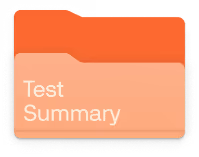
Key Benefits
- See how your brain signals ovaries or testes to ovulate and make hormones.
- Spot your fertile window by detecting the LH surge before ovulation.
- Clarify causes of irregular periods or anovulation, supporting PCOS evaluation.
- Guide fertility treatment choices by distinguishing low- versus high-LH ovulatory problems.
- Flag pituitary or testicular causes when investigating low testosterone or infertility.
- Detect primary ovarian insufficiency or earlier menopause when LH stays persistently high.
- Explain early or delayed puberty by evaluating LH relative to age norms.
- Interpret results with FSH, estradiol/testosterone, prolactin, TSH, hCG, and symptoms.
What is LH?
Luteinizing hormone (LH) is a signaling protein made by the anterior pituitary gland, the small hormone factory at the base of the brain. It is one of the two gonadotropins, produced by specialized gonadotroph cells under stimulation from gonadotropin‑releasing hormone (GnRH) from the hypothalamus. LH is released into the bloodstream in pulses and travels to the gonads—ovaries in women and testes in men—where it binds specific receptors on steroid‑producing cells.
In females, a rapid, mid‑cycle rise in LH (the “LH surge”) triggers ovulation and then supports the corpus luteum to make progesterone. In males, LH drives Leydig cells to produce testosterone. Together with follicle‑stimulating hormone (FSH), LH orchestrates sex steroid production and the development and function of eggs and sperm (steroidogenesis and gametogenesis). Because its release is tightly linked to brain–gonad signaling, LH serves as a window into the health of the hypothalamic‑pituitary‑gonadal axis and the timing of reproductive physiology.
Why is LH important?
LH (luteinizing hormone) is the pituitary’s timing signal for reproduction. In ovaries it triggers ovulation and supports progesterone production; in testes it drives testosterone synthesis. Because sex steroids shape bone, muscle, metabolism, mood, and fertility, LH indirectly influences multiple body systems far beyond reproduction.
Typical values depend on sex and life stage. In adult men, LH sits in a steady low-to-middle range. In cycling women, levels are low-to-middle most of the month with a sharp mid‑cycle surge that prompts ovulation; during pregnancy, LH is naturally suppressed. For most non‑pregnant adults, “optimal” means appropriate-for-context: stable low–middle outside the ovulatory surge.
When LH runs below expected for context, it usually signals reduced pituitary or hypothalamic drive. In women this can mean missed or irregular periods, low estradiol, infertility, vaginal dryness, hot flashes, and gradual bone loss. In men it points to low testosterone with fatigue, low libido, erectile difficulties, reduced muscle mass, anemia risk, and decreased bone density. In children and teens, low LH delays pubertal development.
When LH is high, it often reflects the pituitary pushing against underperforming gonads. In women, very high LH with low estrogen is typical of menopause or primary ovarian insufficiency; LH can also be elevated relative to FSH in polycystic ovary syndrome, contributing to anovulation and androgen excess (irregular cycles, acne, hirsutism). In men, high LH with low testosterone indicates primary testicular failure. In children, elevated LH suggests early activation of puberty.
Big picture: LH sits at the heart of the hypothalamic–pituitary–gonadal axis and must be interpreted alongside FSH, estradiol or testosterone, prolactin, and thyroid status. Persistent imbalance affects fertility, bone strength, body composition, and long‑term cardiometabolic health.
What Insights Will I Get?
Luteinizing hormone (LH) is a pituitary signal to the gonads: it triggers ovulation and supports progesterone in women, and stimulates testosterone and supports spermatogenesis in men. Via these steroids, LH shapes energy, muscle and bone, mood, glucose balance, and cardiovascular health.
Low values usually reflect reduced hypothalamic–pituitary drive (hypogonadotropic hypogonadism). In women, this suppresses ovulation and lowers estrogen, causing irregular or absent periods, lower bone formation, and infertility; pregnancy and hormonal contraception physiologically suppress LH. In men, low LH means low testosterone with fatigue, low libido, less muscle, and anemia. Illness, stress, high prolactin, and certain drugs can blunt LH.
Being in range suggests an intact reproductive axis with appropriate feedback from ovarian or testicular hormones. In cycling women, values are lower outside the brief mid‑cycle surge; mid‑range levels for age and sex typically align with regular cycles or normal spermatogenesis.
High values usually reflect reduced gonadal feedback (primary gonadal dysfunction). In women, menopause and premature ovarian insufficiency raise LH; outside the ovulatory surge, persistently high LH can also occur in some with polycystic ovary syndrome. In men, primary testicular failure elevates LH and often coexists with low testosterone. Pubertal ascent of LH is physiologic.
Interpretation depends on sex, age, cycle timing, and pregnancy. LH is pulsatile, so single values vary; pairing with FSH and sex steroids clarifies source. Exogenous estrogens, progestins, and androgens suppress LH; obesity and acute illness can lower it; rare pituitary tumors alter results.






.avif)



.svg)





.svg)


.svg)


.svg)

.avif)
.svg)










.avif)
.avif)
.avif)


.avif)
.png)


